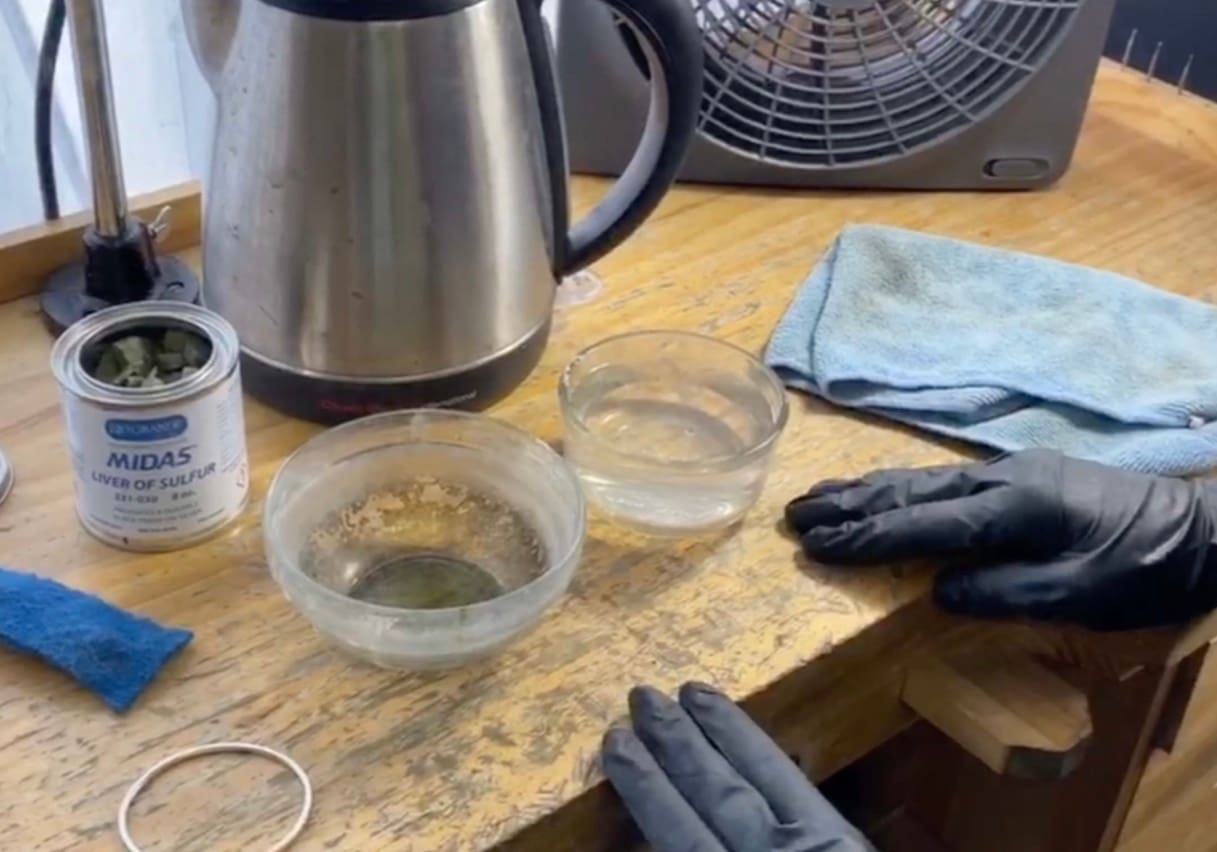Oxidized silver brings a unique, vintage charm to any jewelry collection. Through a special chemical process, it gains a darkened, antique finish, adding depth and style that appeals to both trendsetters and classic jewelry lovers. Beyond its striking look, oxidized silver is low-maintenance and hides signs of wear, making it a practical choice for everyday elegance. In this guide, let’s discover what is oxidized silver, how to oxidize silver, and learn essential care tips to keep your collection well-preserved.

Oxidized silver is sterling silver that has undergone a controlled chemical process to create a darkened or blackened finish. This finish is typically achieved by exposing the silver to sulfur or other chemicals, causing the metal to react and form a patina. The result is a unique, aged look that enhances the depth and texture of the silver.
While oxidized silver is still primarily made of sterling silver (92.5% pure silver), the oxidation process alters its appearance, giving it a matte or satin finish compared to the shiny, polished look of regular silver. So what does oxidised mean? The oxidation process can be used to highlight intricate designs, such as engraving or texture, making it popular for jewelry, including rings, bracelets, and necklaces.
Oxidized silver jewelry features a unique darkened surface created by treating only the outermost metal layer. Over time, with regular wear, this oxidized layer gradually fades, revealing the natural silver color beneath.
Jewelry items that experience minimal friction, such as earrings or necklaces, tend to retain their dark finish longer. In contrast, rings and bracelets—constantly in contact with surfaces—are more prone to gradual lightening. Pieces with recessed oxidized areas hold their color best, while raised areas may naturally polish over time.
To preserve the oxidized finish, remove your jewelry before activities that involve water or rough contact. Avoid abrasive cleaners; instead, use mild dish soap and a soft brush with minimal rubbing. For a refreshed dark look, the oxidized finish can be professionally reapplied by the maker.
To oxidize silver, you can use a liver of sulfur solution or other household items to create a darkened patina. Here’s a guide to silver oxidized using liver of sulfur:

Always follow safety instructions when using liver of sulfur and handle it carefully to avoid skin irritation. Additionally, understanding what is the formula for silver oxide (Ag₂O) can be helpful when working with oxidizing agents in silver treatments.
After learning what is silver oxidized metal and how to do it, it’s essential to know how to preserve that unique finish. To keep oxidized silver looking its best, follow these care steps:
○ Remove before showering, swimming, or exercising to avoid water and sweat, which can wear down the patina.
○ Store in a dry, airtight container to protect from humidity.
○ Wipe with a soft, dry cloth after each wear to remove oils without damaging the finish.
○ Avoid abrasive cleaners; if needed, use a cloth slightly dampened with water, then dry immediately.
○ Keep away from cleaning products, perfumes, and lotions, which can cause fading.
○ If exposed to chemicals, rinse with water and dry thoroughly.
Understanding what is oxidized silver reveals its unique aesthetic and practical benefits. This darkened, vintage-inspired finish is both stylish and low-maintenance, making it a popular choice for those who prefer an effortless, aged look. Proper care can help retain its distinct appearance, allowing each piece to remain timeless. With the right knowledge and upkeep, oxidized silver is a versatile and enduring option for any jewelry collection.
Yes, oxidized silver is genuine sterling silver. The difference lies in a controlled oxidation process that gives the silver a darker, antique appearance. Despite the finish, the underlying metal remains 92.5% pure silver, preserving the same quality and value as traditional sterling silver. This oxidation layer provides a protective surface that can add character to jewelry, making it visually appealing without affecting its silver content.
Choosing between silver and oxidized silver depends on your style and maintenance preference. Traditional silver has a bright, polished look but requires frequent polishing to prevent tarnish. Oxidized silver offers a unique, aged look and is generally easier to maintain, as its darkened finish hides signs of wear. Those looking for vintage aesthetics often prefer oxidized silver, while bright silver appeals to fans of a more classic, shiny appearance.
Oxidized silver may sometimes be priced higher than plain silver due to the additional craftsmanship and time required to create its distinct darkened finish. This finish enhances the piece’s aesthetic appeal and highlights intricate designs, often making it more attractive and desirable to buyers.
How to store jewelry safely and beautifully? Discover expert tips to prevent tarnish, organize pieces, and keep your collection in top condition.
Read MoreLearn how to engrave jewelry with this beginner-friendly guide. Discover techniques, tools and steps to personalize jewelry with professional skills.
Read MoreWhat is a lab grown diamond? Discover how these diamonds are made, their value, and why they’re an appealing, sustainable alternative to natural diamonds.
Read MoreWhat are the best 4C value pieces of diamond? Learn how cut, color, clarity, and carat affect value to find diamonds that excel in quality and affordability.
Read More